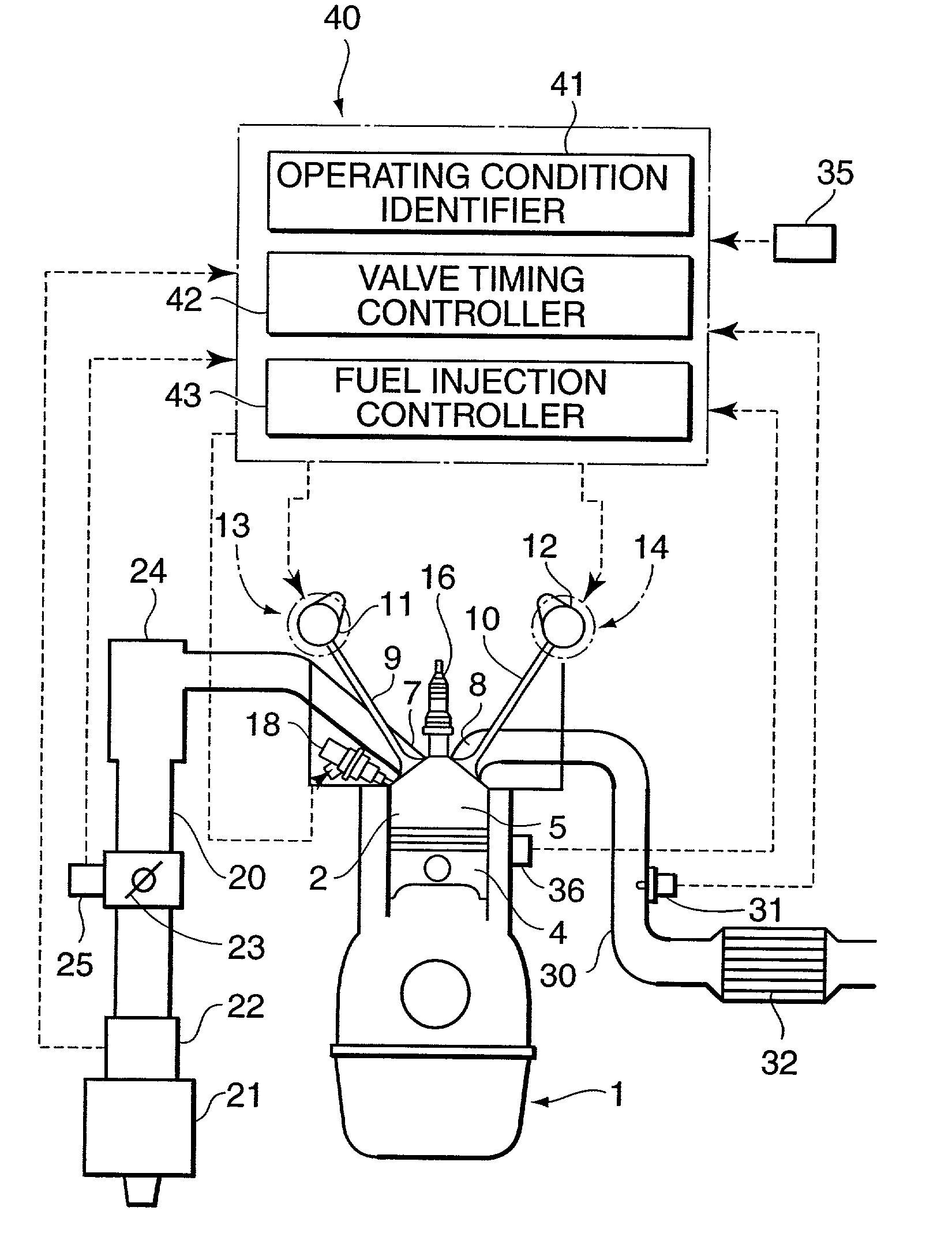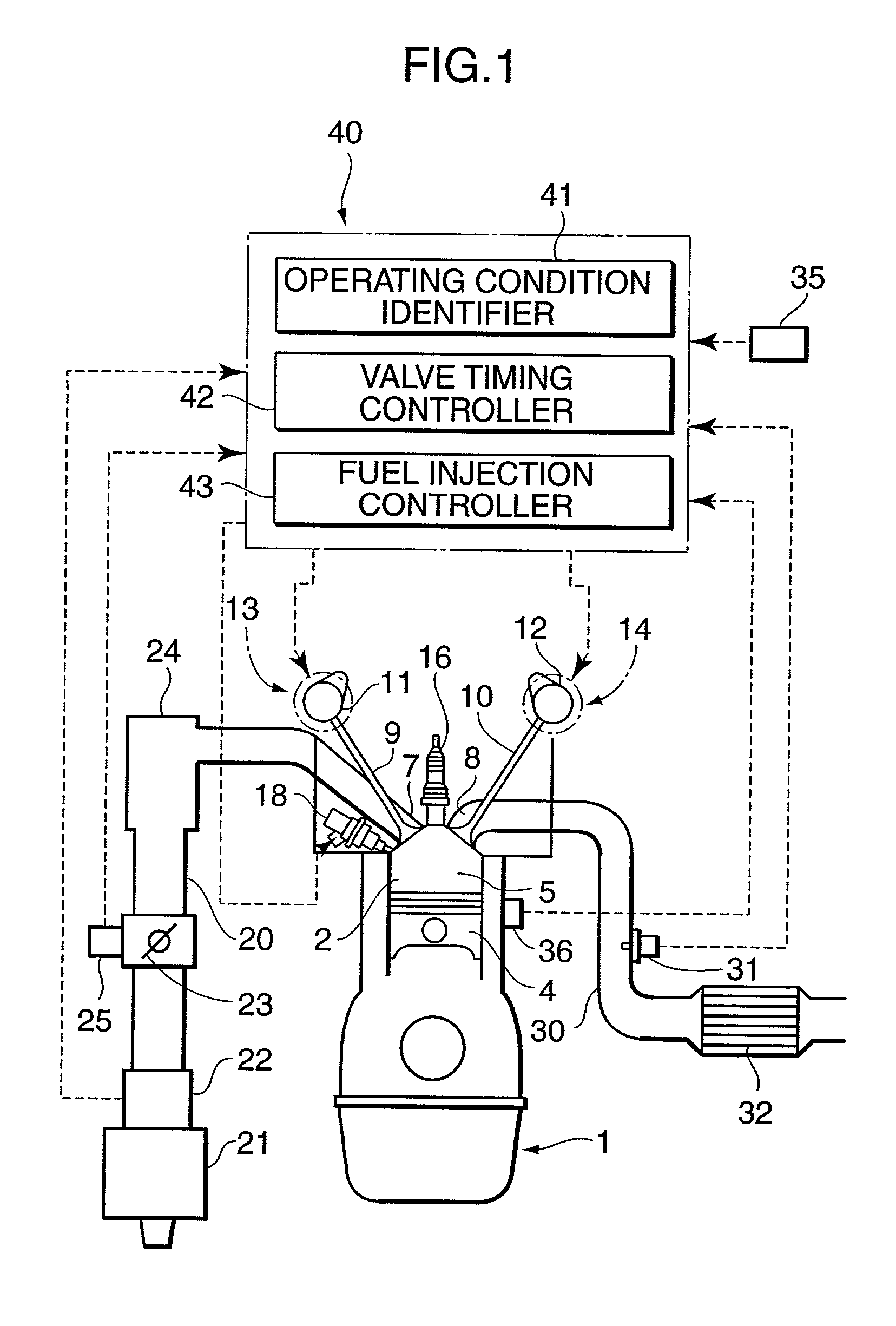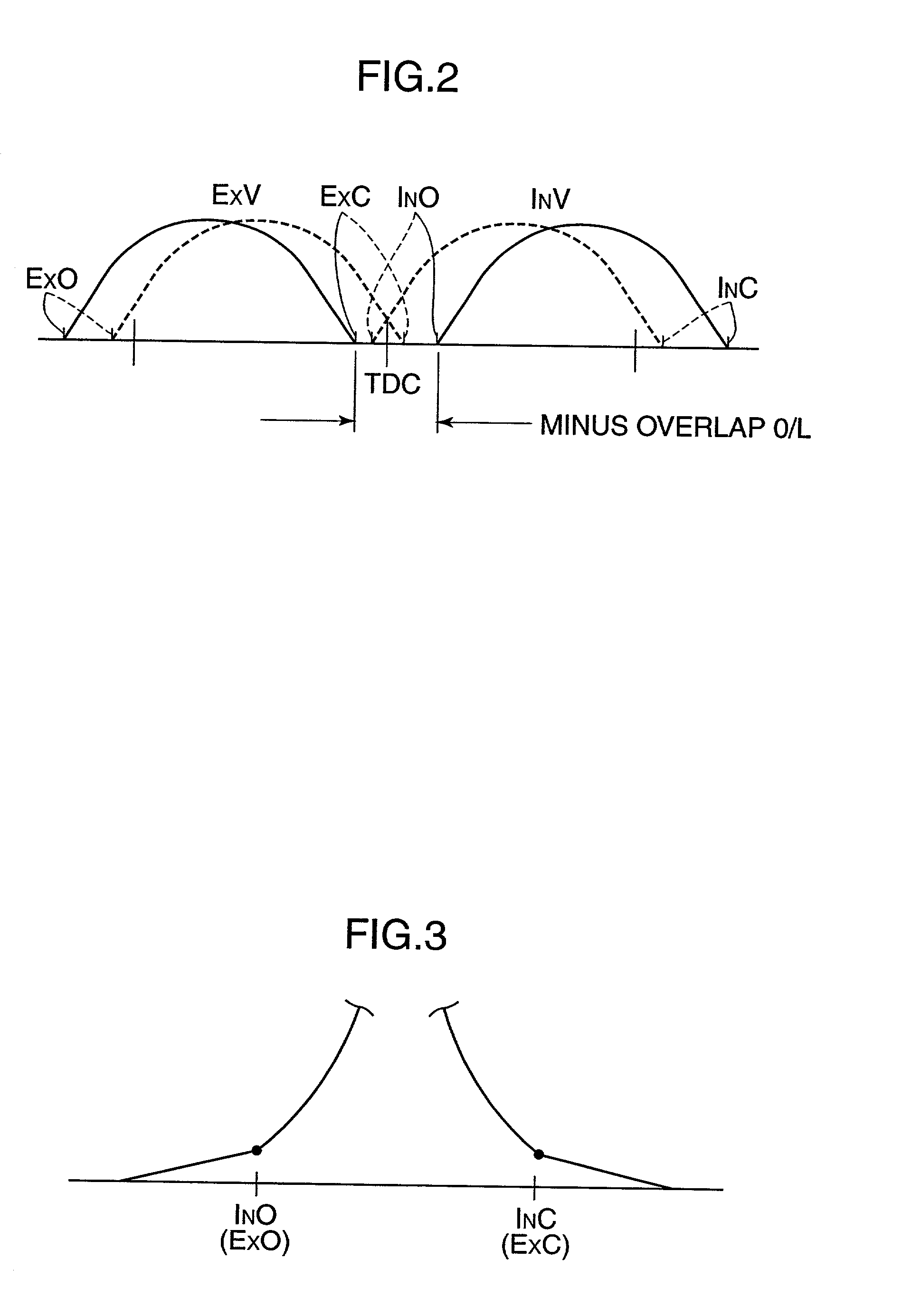Automotive four-cycle engine
a four-cycle engine and engine technology, applied in the direction of machines/engines, output power, electric control, etc., can solve the problems of difficult recirculation of exhaust gas in higher-load conditions, shortening the intake period of each cylinder, and affecting the performance of the engine, so as to avoid the increase in combustion temperature, increase the engine output, and improve the effect of anti-knocking performan
- Summary
- Abstract
- Description
- Claims
- Application Information
AI Technical Summary
Benefits of technology
Problems solved by technology
Method used
Image
Examples
Embodiment Construction
[0036] The invention is now described, by way of examples, with reference to the accompanying drawings.
[0037] FIG. 1 is a schematic diagram showing the overall configuration of an automotive four-cycle engine according to a first embodiment of the invention. Designated by the numeral 1 in FIG. 1 is an engine body having a plurality of cylinders 2. There is formed a combustion chamber 5 in each cylinder 2 immediately above a piston 4 which is fitted in a cylinder bore. An intake port 7 and an exhaust port 8 opening into the combustion chamber 5 are opened and closed by an intake valve 9 and an exhaust valve 10, respectively.
[0038] The intake valve 9 and the exhaust valve 10 are caused to open and close by valve operating mechanisms including cam shafts 11, 12, respectively. The valve operating mechanisms for the intake valve 9 and the exhaust valve 10 are provided with respective valve timing adjusters 13, 14 for adjusting valve opening and closing timing. Provided between a cam pull...
PUM
 Login to View More
Login to View More Abstract
Description
Claims
Application Information
 Login to View More
Login to View More - R&D
- Intellectual Property
- Life Sciences
- Materials
- Tech Scout
- Unparalleled Data Quality
- Higher Quality Content
- 60% Fewer Hallucinations
Browse by: Latest US Patents, China's latest patents, Technical Efficacy Thesaurus, Application Domain, Technology Topic, Popular Technical Reports.
© 2025 PatSnap. All rights reserved.Legal|Privacy policy|Modern Slavery Act Transparency Statement|Sitemap|About US| Contact US: help@patsnap.com



